The episode of Deconstructing… covering Wes Craven’s New Nightmare was Written, Edited, and Narrated by Kier Gomes, Produced by Tyler Nichols and John Fallon, and Executive Produced by Berge Garabedian.
When one of your horror-head friends mentions Wes Craven slasher flicks that lean into the late director’s signature meta filmmaking style, what movie automatically comes to mind? Scream? Well, yeah. But let’s not forget that Scream, while being arguably the greatest and most consistent slasher franchise of all time, is not Craven’s first turn at using meta commentary to create an iconic horror film. The director is remembered fondly for re-invigorating the slasher genre with 1996’s Scream and rightfully so – but before re-invigorating the genre, he first INVIGORATED it with the iconic Nightmare on Elm Street franchise, which introduced audiences to one of the most recognizable movie villains of all time. Freddy Krueger. And while we at JoBlo Horror are forever fans of the iconic series of films starring this dream-stalking maniac, today we’re going to single out one of the franchise’s MOST well-received installments and (barring the less-than-stellar 2010 reboot) the final film in the beloved series… for now. Wes Craven’s 1994 masterpiece titled New Nightmare was a timeless blend of 4th wall shattering narrative and a truly nightmarish story that proves that even the people inventing these scares are not immune to the true horror of their own creation.
And in today’s episode, we’re going to slice open this cult classic movie and figure out just what makes it so important to the genre we all know and love. I’m Kier Gomes with JoBlo Horror, and you’re watching Deconstructing.
Wes Craven’s New Nightmare (get it HERE) follows iconic final girl actress Heather Langenkamp as a loosely dramatized version of herself as she attempts to put her role of Nancy from the Nightmare on Elm Street films behind her. Right off the bat I need to mention that this movie works best if you’ve seen the previous installments, or at the very least the original film. The gimmick of the story is that it’s set in a world where the Nightmare on Elm Street movie franchise is just that, a movie franchise. Instead of Heather Langenkamp playing Nancy, she plays herself, a successful actress in Hollywood who is looking for her next big project. When Nancy starts seeing Freddy in her nightmares after talks of a new Freddy film begin circulating, she slowly realizes that leaving the franchise is going to be much harder than she thought – as director Wes Craven (played by himself) is developing a script that is more real than anyone could’ve expected.
As always we’ll be deconstructing this movie by way of our 4 key categories – Origin, Legacy, Trivia, and finally the X factor, where we look for a unique aspect of the film that deserves more praise. So, if you’re ready then keep your backs to the wall and whatever you do, don’t answer the phone. And let’s hit play on New Nightmare.
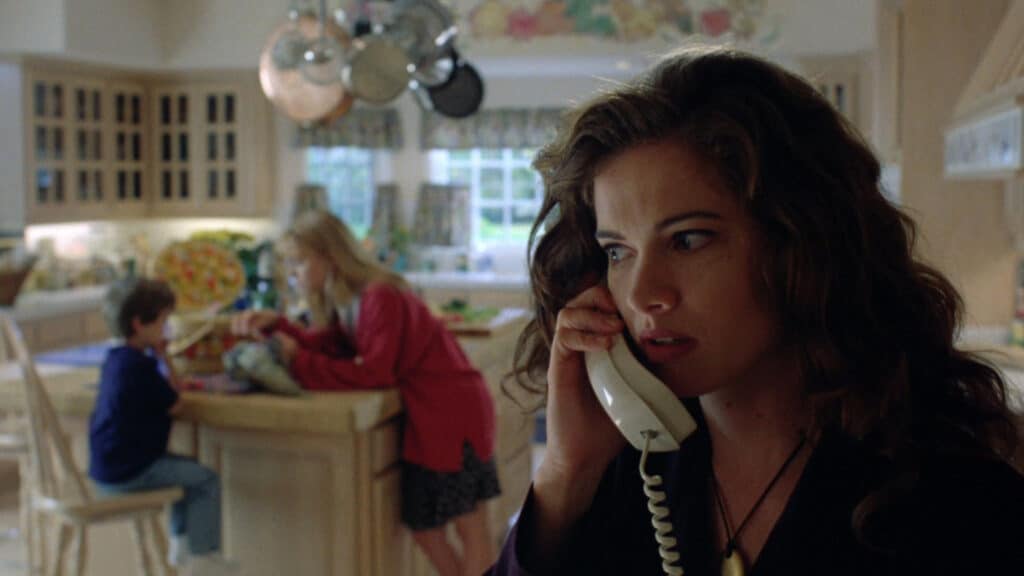
ORIGIN
Now, it’s not exactly a secret that the Nightmare on Elm Street franchise began with the iconic slasher style of the first film and slowly began getting more and more cartoonish and outlandish over the following films. No shade to Craven, I mean, I happen to enjoy most of the movies in the franchise. But Craven set out to deliver audiences something more psychological with this installment. His idea and vision for Freddy and his reign of terror had been carried in an unexpected direction in movies like The Dream Child, which explored many of the more comedic “isms” of Krueger. And the plan for New Nightmare was a return to a darker and more evil Freddy.
According to Craven, the idea for New Nightmare (originally titled Nightmare on Elm Street: The Ascension) was conceived during his time working on Dream Warriors – but New Line rejected the idea at the time, causing Craven to sit on the idea.
The design of Freddy underwent as many changes as the writing of the character as well. With Freddy being given a modified look that was more sleek, and much darker – LITERALLY. They gave Freddy a dark trench coat and a glove that appeared to be fused to his arm. Personally, I love the look of our villain in this film.
Aside from Freddy’s freaky new image, there were quite a few wardrobe pieces and costumes reused in the movie that were saved by Craven from the original film in 1984. I also heard that the story weaves in some truth with Heather Langenkamp having dealt with a stalker in real life, which Craven carefully wrote into the script in the form of Freddy – which adds an eerie realism to Langenkamp’s performance and paranoia.
Producer Sara Risher worked closely with Craven on the production of the film and according to her the shoot was a blast and quite smooth. She quotes: “All of the other directors had to be guided through. But Wes, by then, was the master!”
New Line being reluctant about making the film in the late ’80s was a short-lived setback, as once the 10th anniversary of the original film started approaching, New Line decided that the best way to celebrate the beloved long-running franchise was to have Wes Craven come back to the helm to make his meta-masterpiece. The movie was given a budget of $8 million and cameras started rolling in 1993. 30 years ago. Wow. We’re getting old guys.
LEGACY
I think it’s safe to say that this movie is the definitive final installment of the Nightmare franchise. I say that because the 2010 remake is set in a different canon than the rest of the movies. As such, this movie is remembered as a solid final chapter to the series that perfectly suits Wes Craven’s self-aware sensibilities.
The scene of Freddy attacking Dylan and Judy in the hospital is probably one of the most iconic scenes and for good reason. This is one of the few Elm Street films that genuinely frightened me as a young horror hound.
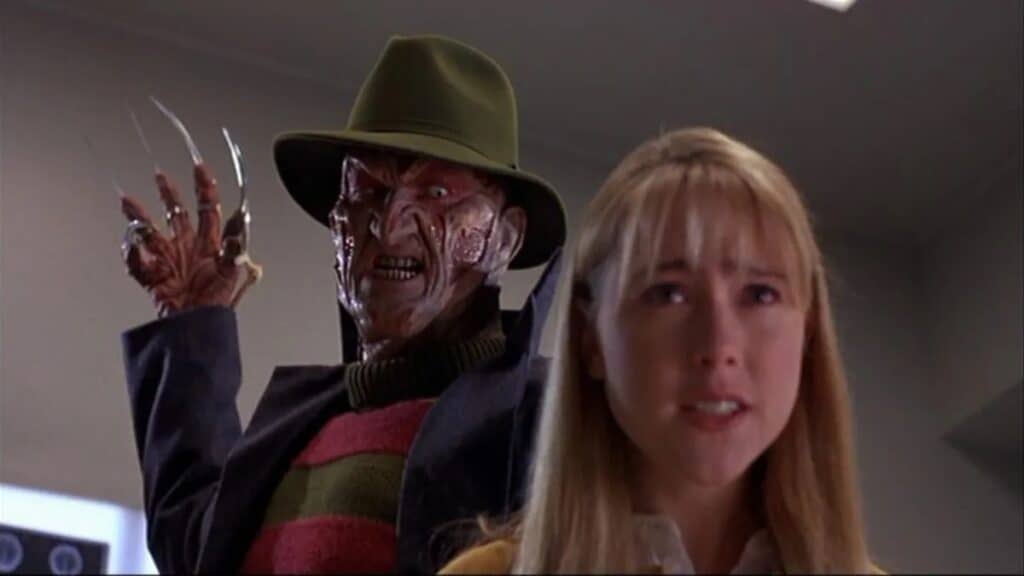
I find that seeing Robert Englund playing himself, who is a mostly gentle and artistic and empathetic person, contrasts very well against this new and much more mean Freddy. Finding a balance between the mystical and practical was also something that helped set the film apart. Using Hollywood as the setting and even bringing in plot elements like the recurring earthquakes which add uncertainty to Heather’s increasingly paranoid behavior. Not to mention the horrifying kills that Freddy commits which seemed much more personal than we were used to. This movie genuinely feels like a final showdown between Heather/Nancy and Freddy and it never lets up once it gets going. There’s plenty of blood, creative set pieces, and disturbing Freddy Krueger supernaturalness but this time it never feels silly.
Miko Hughes as Dylan was a worthy performance as well. He plays Heather’s son, who is being stalked and haunted by Freddy throughout the film, and the scene of him in the park is sure to make any parent’s skin crawl.
But if course we need to cover the infamy as well as the acolytes. And I’m sorry to say that despite being in my top 3 Nightmare movies, this movie had the lowest performing box office reception of any of the other films with a skim $19.8 million. I mean, the movie was competing with Quentin Tarantino’s pop culture phenomenon Pulp Fiction in the fall of 1994 – and many of the filmmakers involved with the project suspect that was the reason for the poor performance.
TRIVIA
In 1993 when this movie was filming, Wes Craven stated that he wanted to give a call to none other than Johnny Depp (who made his debut in the first film) to appear in the movie as himself to keep up the theme of meta-mess and having the actors play themselves. But, in the mid-90s Johnny Depp was on the come up as a Hollywood hotshot and Craven was too embarrassed to ask. Interestingly enough, Depo later told Craven that he would’ve been delighted to work on the movie and would’ve done so if Craven had asked him. Talk about a missed opportunity there…
And did you know that at the end of the movie, there’s a special dedication made to Gregg Fonseca, who was the production designer of the original film and helped build the incredible world of Elm Street? But that’s not all! Fonseca also received a dedication in brilliant 1995 comedy Tommy Boy. I can’t think of two more different movies to have dedicated to you and I love that.
And before we move on, let’s see if you can answer this question:
Which Nightmare on Elm Street movie is on record as Robert Englund’s favorite in the series?
A. A Nightmare on Elm street (1984)
B. Dream Warriors
C. New Nightmare
Comment your answers below!
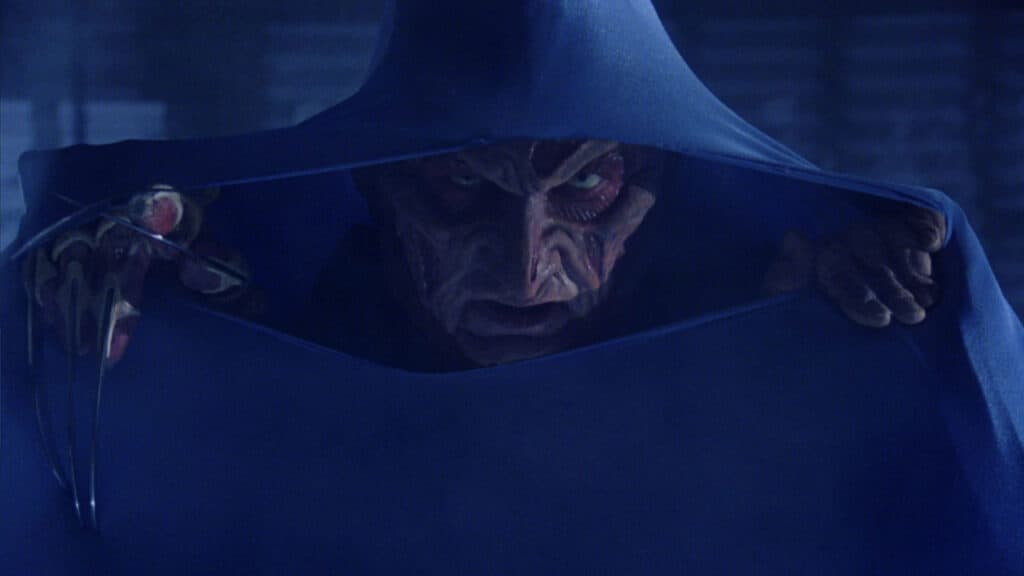
X FACTOR
Okay folks, here we are. For fans of this show, you probably know that I had a difficult time thinking up the right topic for this category. Part of me wanted to make this all about the real-world influences that the writing of this movie uses to craft the narrative. For example, Craven and Englund once appeared on a talk show in San Francisco to talk about whether or not the Elm Street franchise was suitable for kids. The interview inspired Craven to directly recreate it in the film which only adds to the blurred line between being a movie, and kind of being a documentary. And while being absolutely brilliant, it also was very intentional. And I’m looking for something that feels more organic. To the opposite effect of art imitating life, life imitates art as the LA earthquakes in the film were shot only months before the actual catastrophic earthquakes in 1994. I like to think that similar to how Craven’s writing came to life in New Nightmare, the writing of the actual script came to life as well. It’s meta on so many levels that it almost confuses you, am I right?
And ya know what, maybe I’ve been overthinking the X factor of this movie. While I usually pride myself on finding small details that make a big impact on the film, I think the true genius of this movie is much simpler. I could sit here all day and point out all the ways that Craven outdid himself – but the reality is that the X factor if this movie is crystal clear from the very opening scene… It’s the 4th wall.
Honestly people, let’s think about it. Breaking the 4th wall is practically commonplace in movies today. Whether it’s Deadpool being aware that he’s in a movie, or even Ferris Bueller speaking directly to the camera in John Hughes’ iconic ode to playing hooky, this movie takes what was previously a wild and complex franchise and completely exposes it, while simultaneously expanding on it. It’s like a 4th wall inside of a 4th wall… it’s like… an 8th wall? Or like… a 16th wall? Either way, it’s too brilliant and way too much fun to not be the X factor.
As always I’m dying to hear your thoughts on this iconic movie and if you’re a fan of the Elm Street franchise, leave your ranking of the movies down below!
Also let us know if you want to see a new Elm Street movie, I think with enough interest and the right idea, we may be able to see Mike Flanagan give us his take on this beloved character. And I personally think it would be a dream come true, or should I say, a nightmare?
A couple of the previous episodes of Deconstructing… can be seen below,. To see more episodes, and to check out our other shows, head over to the JoBlo Horror Originals YouTube channel – and subscribe while you’re there!






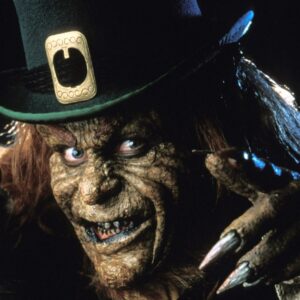
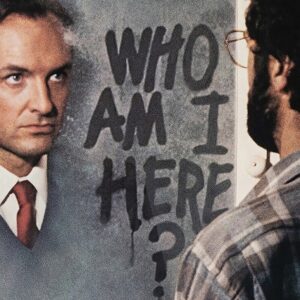
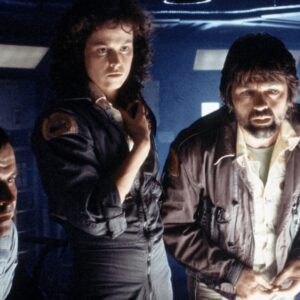

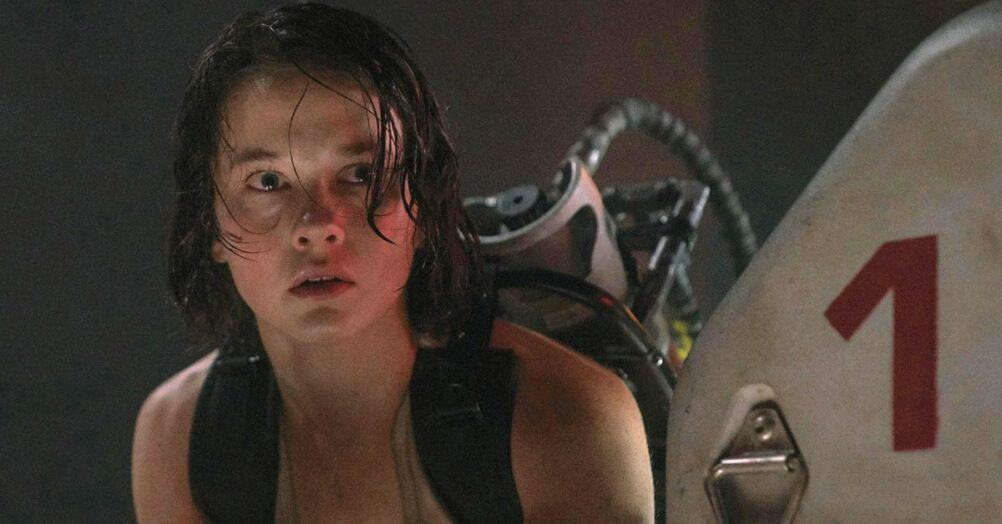


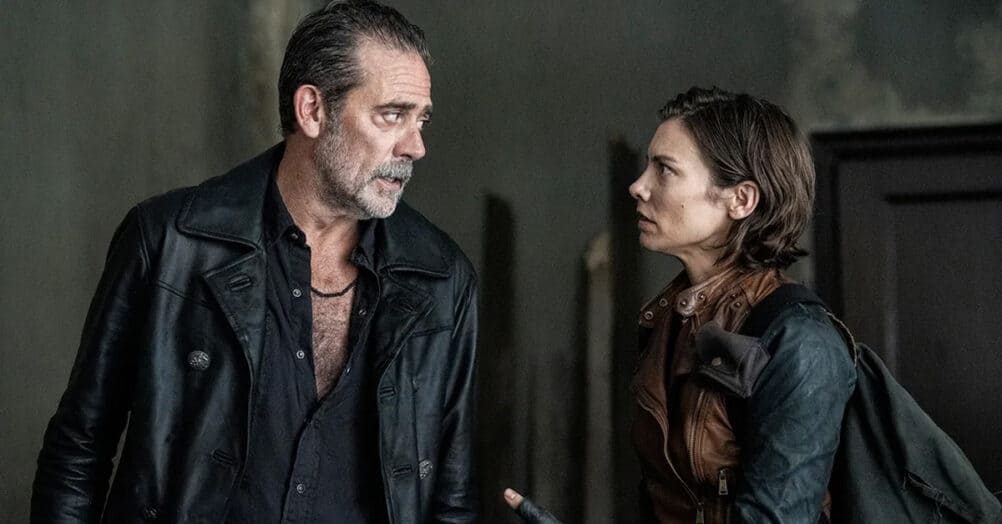
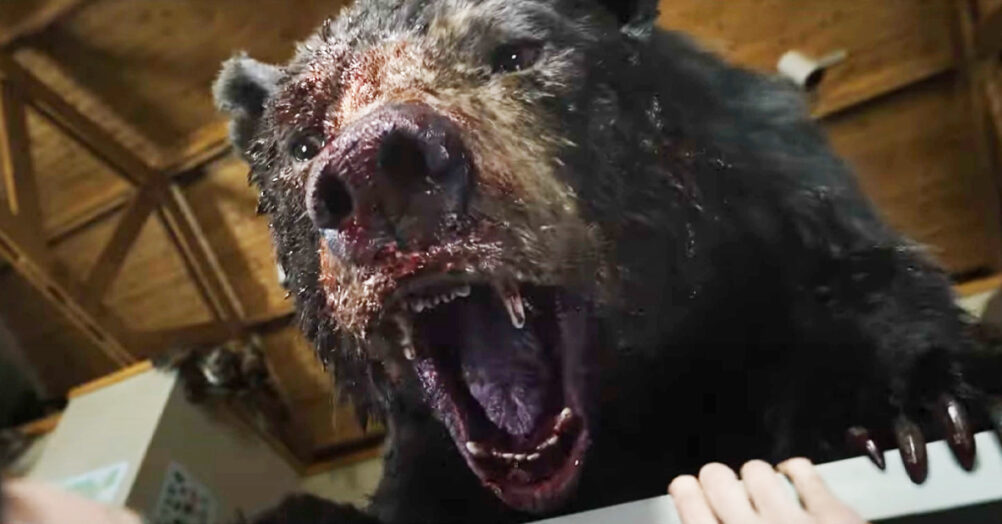

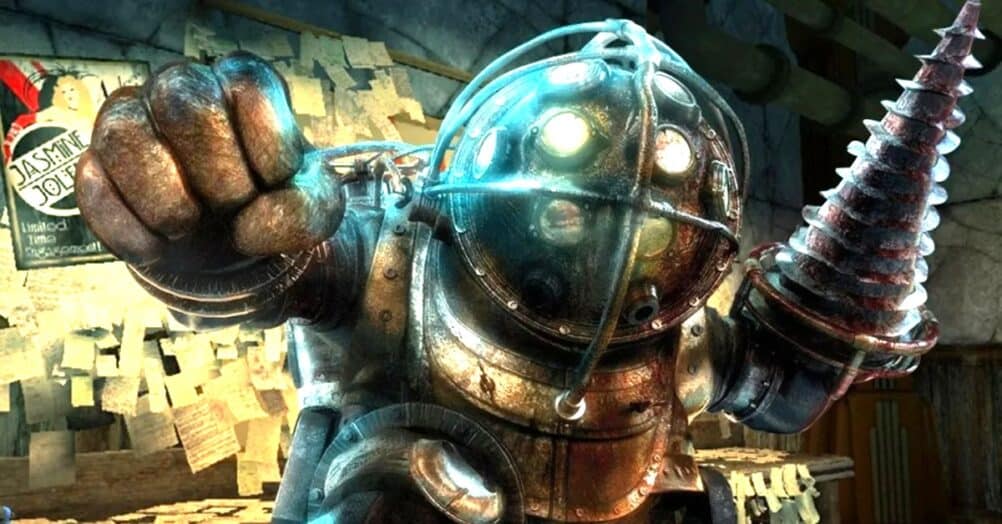
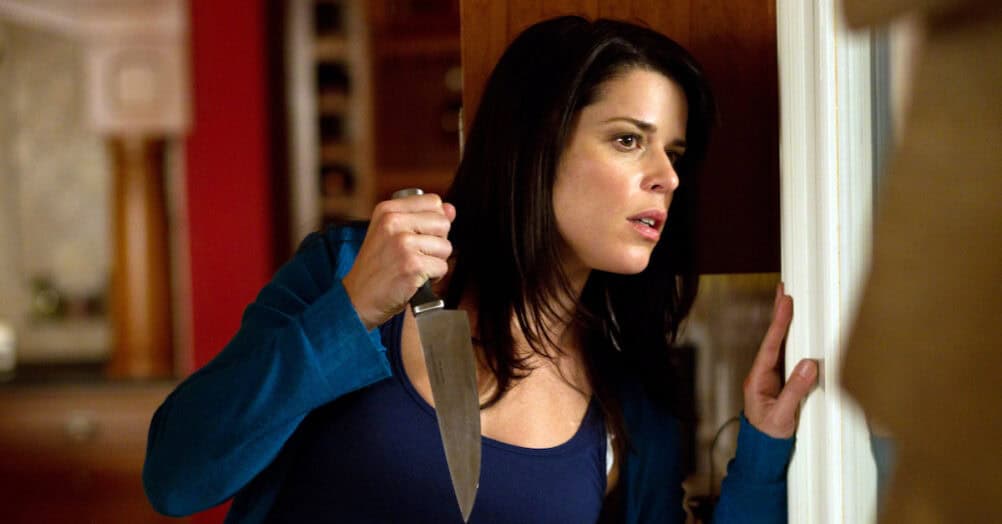


Follow the JOBLO MOVIE NETWORK
Follow us on YOUTUBE
Follow ARROW IN THE HEAD
Follow AITH on YOUTUBE